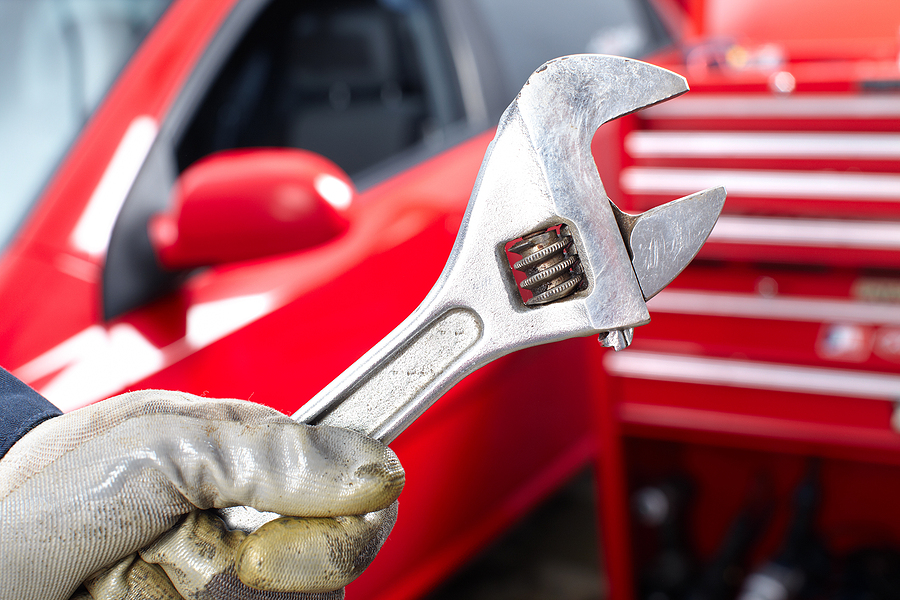Your pickup truck is more than just a vehicle—it’s your reliable partner for work, adventure, and daily life. Whether you’re hauling equipment to a job site or heading out on a weekend camping trip, you depend on your truck to perform when you need it most. But like any hardworking machine, your truck requires routine care to deliver its best performance. Regular truck maintenance isn’t just about keeping your vehicle running—it’s about extending its lifespan, improving performance, enhancing safety, maintaining higher resale value, and reducing costly repair bills down the road.
This guide provides valuable insights for everyone. We’ll walk you through a complete maintenance schedule that will keep your pickup truck running smoothly for years to come, explain why each task matters, and help you understand when to handle maintenance yourself versus when to seek professional truck repair services. Let’s dive in.

Truck Maintenance 101
The difference between a truck that serves you faithfully for 200,000 miles and one that leaves you stranded on the roadside often comes down to one thing: consistent, proactive maintenance. Let’s explore how to give your truck the care it deserves.
Monthly Maintenance Tasks
Establishing a monthly maintenance routine creates the foundation for long-term truck health. These quick checks take less than 30 minutes but can prevent major problems and costly repairs.
Check Tire Pressure and Tread Depth
Your tires are your truck’s connection to the road, making them critical for safety and performance. Check tire pressure when tires are cold, preferably in the morning before driving. The recommended pressure is typically found on a sticker inside the driver’s door frame or in your owner’s manual.
For trucks like the Ford F-150, Chevrolet Silverado, and Ram 1500, proper tire pressure usually ranges from 35-65 PSI, depending on your specific model and tire size. Underinflated tires reduce fuel efficiency and cause premature wear, while overinflated tires can lead to blowouts and poor traction.
Inspect tread depth using the penny test: insert a penny into the tread with Lincoln’s head facing down. If you can see the top of Lincoln’s head, it’s time for new tires. Adequate tread depth ensures proper traction, especially important for pickup trucks that often encounter challenging driving conditions.
Inspect Fluid Levels
Your truck relies on various fluids to operate smoothly. Check these essential fluids monthly:
- Engine Oil: Use the dipstick to verify oil level falls between the minimum and maximum marks. Dark, gritty oil needs changing soon.
- Coolant: Check the reservoir when the engine is cool. Low coolant levels can lead to overheating and engine damage.
- Brake Fluid: Low brake fluid may indicate worn brake pads or a leak in the brake system.
- Power Steering Fluid: Low levels can cause difficult steering and pump damage.
- Windshield Washer Fluid: Essential for maintaining visibility, especially during long drives.
Examine All Lights
Proper lighting is crucial for safety and legal compliance. Test headlights, taillights, brake lights, turn signals, and hazard lights monthly. Replace burned-out bulbs immediately, as they’re inexpensive fixes that prevent accidents and traffic citations.
Contact Us for Truck Repair and Service ✪
Quarterly Maintenance: Every 3 Months or 3,000 Miles
These tasks require more attention but are essential for maintaining your truck’s performance and preventing major mechanical issues.
Change Engine Oil and Filter
Regular oil changes are the most important maintenance task for your pickup truck. Fresh oil lubricates engine components, reduces friction, and carries away contaminants. The Ford F-150, Chevrolet Silverado, and Ram 1500 typically require 5-8 quarts of oil, depending on engine size.
Consider using synthetic oil for improved engine protection and extended oil change intervals, especially if you use your truck for heavy-duty work or drive in extreme climate conditions. Synthetic oil provides better protection at high temperatures and flows more easily in cold weather.
Inspect Belts and Hoses
Engine belts drive critical components like the alternator, water pump, and air conditioning compressor. Look for cracks, fraying, or glazing on belt surfaces. Hoses carry coolant, oil, and other fluids throughout your truck. Check for swelling, cracking, or soft spots that indicate deterioration.
Replace worn belts and hoses before they fail. A broken serpentine belt can leave you stranded, while a failed coolant hose can cause engine overheating and expensive damage.
Semi-Annual Maintenance: Every 6 Months or 6,000 Miles
These tasks help maintain your truck’s handling, braking, and overall safety.
Rotate Tires
Tire rotation promotes even wear and extends tire life. Front tires typically wear faster due to steering and braking forces. Follow your truck’s recommended rotation pattern, usually found in the owner’s manual.
For most pickup trucks, the standard rotation pattern moves front tires straight back and rear tires to the opposite front positions. This simple maintenance task can significantly extend tire life and improve traction.
Inspect Brake Pads and Rotors
Brakes are your truck’s most important safety system. Look through the wheel spokes to check brake pad thickness. Most pads have wear indicators that squeal when replacement is needed. Inspect rotors for scoring, cracking, or excessive wear.
Given the weight and towing capacity of trucks like the F-150, Silverado, and Ram 1500, brake maintenance is especially critical. These vehicles work harder and generate more heat during braking, making regular inspections essential.
Check Suspension Components
Pickup trucks endure significant stress from hauling loads and navigating rough terrain. Inspect shock absorbers, struts, and suspension bushings for leaks, damage, or excessive wear. Worn suspension components affect ride quality, handling, and tire wear.
Get Expert Truck Service at an Affordable Price! ✨
Annual Maintenance: Every 12 Months or 12,000 Miles
These yearly tasks help maintain your truck’s efficiency and prevent system failures.
Replace Air Filter and Cabin Air Filter
A clean air filter ensures proper airflow to the engine, which can improve fuel efficiency and performance. The cabin air filter keeps the air inside your truck clean and fresh. Both filters are relatively inexpensive and easy to replace.
Dirty air filters restrict airflow, reducing performance and fuel economy. In dusty conditions or if you frequently drive on unpaved roads, you may need to replace these filters more frequently.
Inspect and Clean Battery Terminals
Periodically inspect and clean battery terminals to prevent corrosion and ensure proper electrical connections. Corrosion appears as a white, chalky substance around battery terminals. Clean terminals with a wire brush and apply petroleum jelly to prevent future corrosion.
A failing truck battery can leave you stranded, especially during extreme weather. Most truck batteries last 3-5 years, but regular maintenance can extend their lifespan.
Check and Adjust Wheel Alignment
Proper wheel alignment ensures even tire wear and optimal handling. Signs of misalignment include uneven tire wear, pulling to one side while driving, or a crooked steering wheel when driving straight.
Pickup trucks are particularly susceptible to alignment issues due to their weight and the loads they carry. Regular alignment checks help maximize tire life and improve fuel efficiency.
Long-Term Maintenance: Major Service Intervals
These high-mileage services address wear items and systems that require periodic attention.
30,000-Mile Service
- At 30,000 miles, consider replacing spark plugs if your truck has a gasoline engine. Modern plugs last longer than older designs, but replacement ensures optimal performance and fuel efficiency.
- Inspect and service the transmission, including fluid changes. Transmission fluid lubricates and cools internal components. Dark, burned-smelling fluid indicates the need for immediate attention.
- Flush and replace coolant to prevent corrosion and maintain proper engine temperature. Old coolant loses its protective properties and can cause expensive engine damage.
60,000-Mile Service
- Replace brake pads and rotors if needed. Heavy-duty use and towing may require more frequent brake service. Inspect and service the differential, which transfers power from the transmission to the wheels.
- Replace the fuel filter to ensure clean fuel reaches the engine. A clogged fuel filter can cause poor performance and potential engine damage.
100,000-Mile Service
- Replace the timing belt if your truck has one. Timing belt failure can cause severe engine damage. Inspect and service the 4WD system, including transfer case fluid changes.
- Replace hoses and belts that show signs of age or wear. Even if they appear functional, rubber components deteriorate over time and can fail without warning.
Additional Maintenance Tips for Pickup Truck Owners
Storage and Seasonal Considerations
If you store your truck for extended periods, use a fuel stabilizer in the gasoline to prevent fuel degradation. Fuel can become stale and cause starting problems or engine damage.
Chassis Maintenance
Check and lubricate chassis components such as ball joints, tie rod ends, and u-joints to maintain smooth operation and prevent premature wear. These components endure significant stress in pickup trucks, especially those used for towing or off-road driving.
Emergency Preparedness
Keep an emergency roadside assistance kit in your truck at all times. Include basic tools, jumper cables, a tire pressure gauge, and emergency supplies. Being prepared can turn a minor inconvenience into a manageable situation.
Documentation
If you handle maintenance yourself, keep detailed records of all maintenance and repairs. This documentation helps maintain warranty coverage and provides valuable information for future service needs. It also significantly increases resale value when you decide to sell your truck.
Final Thoughts
Your pickup truck is built to handle tough jobs and long miles, but only when properly maintained. The maintenance schedule outlined in this guide will help you maximize your truck’s lifespan, performance, and safety while minimizing unexpected breakdowns and costly repairs.
Remember that every maintenance task serves a purpose. Oil changes protect your engine, brake inspections ensure safety, and tire rotations extend tire life. These aren’t just suggestions—they’re investments in your truck’s future and your peace of mind.
Whether you’re comfortable performing basic maintenance yourself or prefer professional service, the key is consistency. Don’t wait for problems to develop. Proactive maintenance is always less expensive than reactive repairs.
If you’re ready to give your truck the professional care it deserves, schedule a maintenance appointment with a trusted mechanic today. Your Ford F-150, Chevrolet Silverado, or Ram 1500 will reward you with years of reliable service when you commit to proper maintenance.
For professional truck maintenance and repair in Indianapolis, contact Northeast Auto Service today to schedule your appointment. Our experienced technicians understand pickup trucks and will help keep your vehicle running strong for years to come.
Click Here to Book Your Service
Related Post: Automotive Maintenance 101 for Trucks



